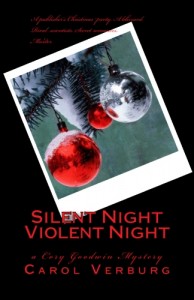Determined to exist in time for the holidays, the print version of Edward Gorey On Stag e: Playwright, Director, Designer, Performer: a Multimedia Memoir continues to inch toward publication. Over the past week this valiant little volume has fought off attacks of spontaneous indentation, skewed colors, and other slings and arrows of outrageous fortune that tree-flesh is heir to. Each new setback only renews its fervor to leap into shiny new covers, thence into wrapping paper and ribbon, thence onto a hidden shelf, down a stocking, or under a tree, to emerge at last into the delighted hands of a Gorey fan.
e: Playwright, Director, Designer, Performer: a Multimedia Memoir continues to inch toward publication. Over the past week this valiant little volume has fought off attacks of spontaneous indentation, skewed colors, and other slings and arrows of outrageous fortune that tree-flesh is heir to. Each new setback only renews its fervor to leap into shiny new covers, thence into wrapping paper and ribbon, thence onto a hidden shelf, down a stocking, or under a tree, to emerge at last into the delighted hands of a Gorey fan.
You can help make this unique mini-biography’s dream come true! Official publication date is November 29, and like the Fiscal Cliff it’s still . . . well, a cliffhanger. Stay tuned! And join us to celebrate Victory (fingers Xd) on Sunday afternoon, Dec. 9, 4-6 PM at the Bottle Cap, opposite North Beach’s Washington Square Park, where four fascinating books will be matched with four delicious wines at a fabulous Wine and Book Tasting.



